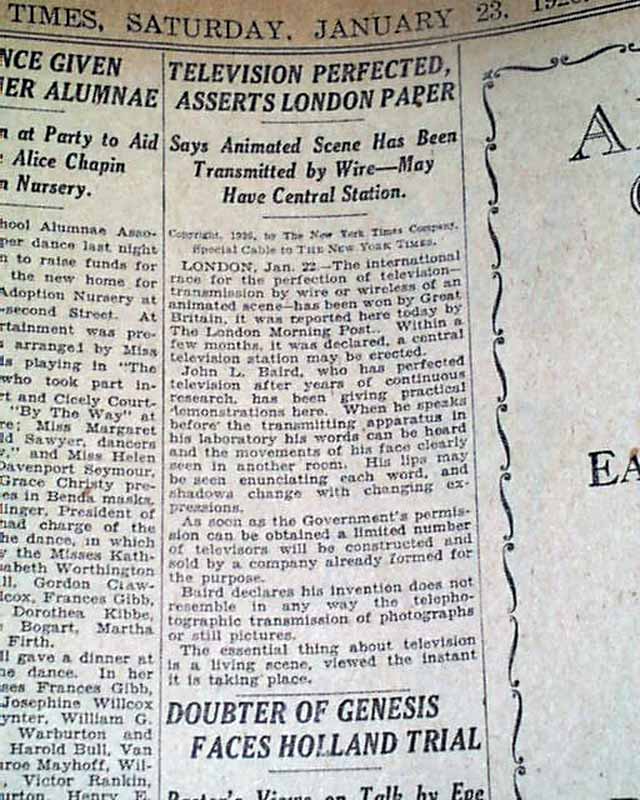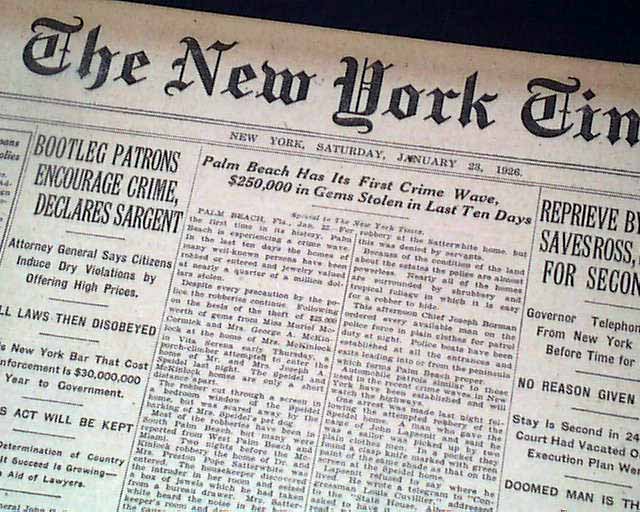Home >
The development of television in 1926...
The development of television in 1926...
Item # 716549
January 23, 1926
THE NEW YORK TIMES, January 23, 1926
* First television transmission
* John Logie Baird
This very significant event marks the development of television, an invention which would change not only the worlds of entertainment & communication forever, but society as well.
Page ten of this issue contains this news, with one column heads at the top of the page reading: "Television Perfected, Asserts London Paper" "Says Animated Scene Has Been Transmitted by Wire--May Have Central Station" (see images)
A significant issue for any collector of television history. Complete in 32 pages, disbound, light toning, a little irregular at the spine, generally nice.
background: On January 23, 1926, Scottish inventor John Logie Baird achieved a groundbreaking milestone in the history of television by delivering the first successful public demonstration of a working television system. Using a mechanical scanning device known as the Nipkow disk, Baird’s apparatus was able to capture, transmit, and reproduce moving images, marking the very first time that live, real-time video could be broadcast. The demonstration took place in London, where Baird projected low-resolution, blurry, monochrome images of a ventriloquist’s dummy’s head, which, despite their crude quality, represented a monumental leap from still photographs to moving pictures. This early mechanical television system relied on rotating disks with holes to scan and reconstruct images line-by-line, a method that, while soon to be eclipsed by electronic television, showcased the potential for transmitting visual information over distances. Baird’s pioneering work laid the essential foundation for the future development of television technology, influencing both mechanical and later electronic systems and igniting the race toward the modern broadcast television era.
Category: The 20th Century














